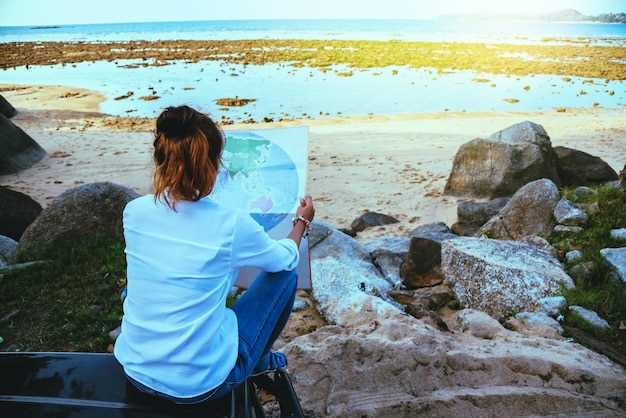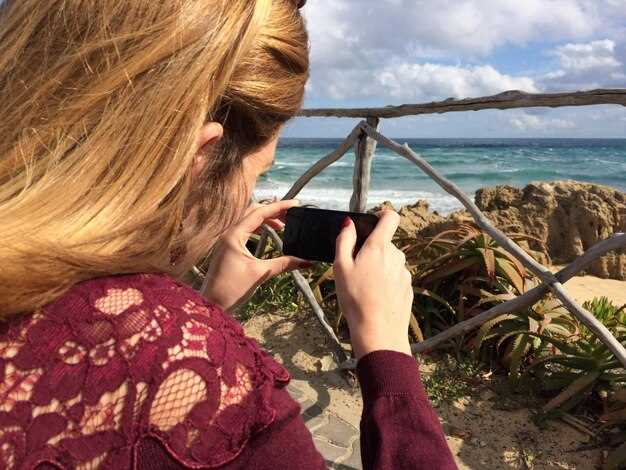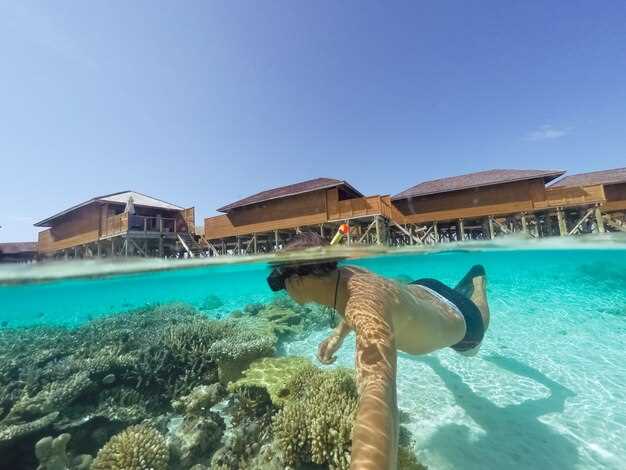Begin with an outer-reef snorkel at first light to see corals and reef life awake. The Great Barrier Reef stretches about 2,300 km and hosts roughly 2,900 reefs with 900 islands, giving tourists a wealth of iconic sites and options for enjoying crystal-clear water, vivid fish, and breathtaking color.
Accommodations range from eco-lodges on private islands to beachside hotels in Cairns and Port Douglas, with camp options for backpackers and family-friendly apartments for comfortable stays. Brisbane, the capital of Queensland, serves as a practical gateway to the reef region and a convenient base for day trips, sunset cruises, and city museums after a day on the water. Tourists can choose reef-friendly operators, ensuring safety and protecting marine life, an ideal approach for a flexible trip.
Another must-do is a guided snorkel along Ribbon Reefs, where macro life and sweeping coral formations create a breathtaking underwater scene. Guides share safety tips, reef etiquette, and how to pick equipment that suits you, making the experience applicable to beginners and seasoned snorkelers alike.
Looking beyond the water, you can island-hop, kayak, or join Indigenous sea-country tours that explain local ecology and cultural heritage. If you’re looking for a mix of adventure and relaxation, island-hopping, kayaking, and cultural tours fit the bill. These encounters contribute to life experiences and enriching memories, with idyllic sunsets, authentic seafood tastings, and quiet coves that invite slowing down and savoring more tranquil moments.
Taking a reef-forward itinerary with licensed operators ensures you cover the best sites without harming habitats. This plan suits tourists seeking a balanced mix of adventure and relaxation, with accommodations that match your pace and budget, and leaves you returning with enriched life experiences and a deeper connection to the Queensland coast, with Brisbane acting as a convenient gateway.
Practical guide to the reef’s top experiences and Lady Elliot Island

Book a guided snorkel trip on Lady Elliot Island and base yourself at the exclusive Eco Resort for year-round access to reef life. Visiting this paradise starts your day on calm water with a friendly guide who shows the best spots.
To reach land, you typically fly from Hervey Bay or Bundaberg and take a short boat transfer. The elysian setting welcomes you, and checking in takes minutes, letting you focus on the wide reef ahead.
Seven standout experiences shape your itinerary: swim with green turtles in the turquoise lagoon; explore the reef edge with a guide to spot parrotfish and wrasse; snorkel across wide flats where coral gardens glow; walk the sand cay at low tide to watch seabirds; join a night snorkel to meet nocturnal critters; visit the shore to see nesting behavior and learn from the provided interpretation notes; and use these insights to understand reef resilience.
Nature lovers discover a wonderland amid an elysian setting that feels like paradise. Known for its calm pace and abundant turtles, the island invites you to return year after year and to explore at your own tempo.
Practical tips to maximize your time: check the booking page for trip times; plan around michaelmas and other seasonal windows for optimal visibility; pack reef-safe sunscreen, a lightweight cover, a reusable bottle, and a small dry bag; keep snacks simple–avoid loose potato chips to protect wildlife; and bring a compact snorkel set if you have one.
Other options nearby include a day trip to Whitehaven Beach on the mainland’s west coast, a different kind of paradise with pure silica sand. If you have time, combine this with your reef visit for a varied Queensland experience.
Page details and provided gear cover your basics: snorkeling gear, wetsuits for cooler months, and ranger-led talks. Return home with a memory-rich page of moments and a plan to revisit this piece of wonderland.
Lady Elliot Island Reef Walk: routes, duration, and what you’ll see

Booking ahead is essential to secure a chosen slot on the Lady Elliot Island Reef Walk. Visiting early offers calmer seas and clearer light, ideal for sunlover photographs and anyone keen to observe reef life up close.
Two main routes guide you: along the sands edge, between sheltered coves, and toward the deeper reef. The standard loop runs about 60-75 minutes; the long option adds extra stops and a glass-bottom viewing deck for close looks at corals without entering deeper water.
On the path you’ll see extraordinary color and life: parrotfish and damselfish weaving through branching corals, starfish and urchins on sands, sea turtles gliding through calmer pockets, and the occasional divers pausing to study a reef nook. Those who love nature will enjoy the chance to compare the worlds under the surface from the glass-bottom section.
Should you join a guided group, your chosen guide will explain reef dynamics, linked habitats, and conservation efforts. Booking options include a small-group walk or private sessions. The area is owned by a conservation trust, and visitors have a clear gain in knowledge from staying on the fixed path that protects corals.
Practical tips: wear reef-safe sunscreen, bring water, and wear shoes suitable for sandy and coral terrain. If you arrive by boat, the marina transfer is simple. After the walk you can visit cafes on the island or take short cruises back to your accommodation. If visiting by cruise, check the schedule so you won’t miss the walk’s window. The entire experience offers an opportunity to learn, with a long list of sights to see and a true opportunity to gain appreciation for the island’s fragile worlds.
Top snorkeling sites around Lady Elliot Island for different skill levels
Begin at Nudey Beach for a gentle start to snorkelling, where calm, shallow water makes every colour pop and seabirds circle overhead. Nudey is a long-standing favourite for beginners and a perfect introduction to the island’s quiet marine theatre.
Looking to tailor your day? Here are reliable options by skill level:
-
Beginner – Nudey Beach and adjacent flats
Distance from shore is short: a 5–10 minute snorkel puts you over 1–2 m of water with sandy patches and grass beds. Expect easy encounters with small reef fishes, nudibranchs, and curious crustaceans. The idyll of the beach, friendly colours, and shallow depth create an idyllic environment for discovering the basics of snorkelling. The setting is perfect for building confidence, with local guides ready to share tips and information. Nudey Beach showcases natures at their most approachable, making this starting point lasting and satisfying for first-timers.
-
Intermediate – reef edge beyond Nudey
Distance 0.6–1.5 km from Nudey Beach; depth 5–12 m. The coral bommies, a wider fish mix, and occasional sea turtles offer a richer canvas. It is a longer snorkel, but still manageable for those looking to discover more. Silversonic and other local operators provide transfers to the edge, typically a 15–25 minute ride. This site invites you to discover more, look for hidden nooks, and share sightings with companions. It reinforces the mission of responsible snorkelling while highlighting the heritage of the reef and coast that locals protect together as a united community of snorkellers.
-
Advanced – outer reef edges and channels
Distance 2–3 km from Nudey Beach; depth 12–20 m with stronger currents on certain tides. Expect larger schools of fish, vibrant soft corals, and greater water clarity. This level suits confident snorkellers who have practiced buoyancy and navigation; guided sessions with experts are advised. After the swim, you can enjoy lasting memories of a pristine environment and the island’s heritage, while you discover the full breadth of Lady Elliot’s underwater world. For a complete experience, a ride on silversonic or another local boat can be paired with shore time to enjoy both reef and beach.
Practical notes: check daily information from the resort for current conditions and wildlife alerts; Michaelmas season brings extra seabird activity around offshore sites, enriching the viewing experience. Some itineraries include a ferry transfer from the mainland to the island, adding convenience for groups. Always coordinate with local experts to ensure safety and accessibility, sharing knowledge to enhance everyone’s snorkeling journey. This united effort gives you a chance to enjoy, discover, and share lasting memories, with Nudey as your anchor and the surrounding sites expanding your mission to explore responsibly.
Return to nudey for a quick final snorkel if you’re chasing a last glimpse of turtles or ghostly parrotfish. This sequence of sites keeps the day short, yet deeply rewarding, letting you look, discover, and enjoy the island’s heritage while keeping the experience sustainable for future visitors.
Manta ray and sea turtle sightings: best seasons, sites, and etiquette
Plan a late dry-season visit to Nudey Beach on Fitzroy Island for reliable sightings of manta rays and sea turtles, with calmer waters and clearer light for snorkeling along the reefs.
What to expect by season:
- Manta rays: best opportunities occur from April to October along outer reefs such as The Ribbon Reefs, Agincourt Reef, and around Lizard Island. Look for clear, low-wind days to maximize visibility within protected marine areas, where platforms offer gentle snorkeling and guided encounters.
- Sea turtles: sightings happen year-round, with nesting peaks from December to March on mainland beaches and in and around the Whitsunddays and other northeast tropical shores. Hatchlings commonly emerge a few weeks after nests, adding a dramatic touch to morning snorkels or beach walks.
Prime sites to increase your chance of encounters:
- The Ribbon Reefs (Cairns region) – high density of manta sorties and frequent turtle sightings during the season.
- Agincourt Reef (off Port Douglas) – clear channels attract plankton and turtles, ideal for short boat trips within a single day.
- Lizard Island area – remote and pristine, offering secluded chances to observe large mantas and schooling turtles.
- Nudey Beach, Fitzroy Island (mainland) – a convenient, sheltered option for walkers and snorkelers seeking steady sightings near shore.
- Whitsunday Islands – numerous beaches and bays along the northeast tropical coast provide reliable opportunities; plan a multi-day option to maximize your chance.
Etiquette to follow for respectful, responsible viewing:
- Keep a comfortable distance from creatures and avoid chasing or blocking their path.
- Do not touch or feed manta rays or sea turtles; let them approach you if they choose.
- Move slowly, speak softly, and minimize noise to reduce stress on the animals and other adventurers sharing the site.
- Respect signage and guide instructions, especially in protected areas within the reef and on beaches during nesting times.
- Maintain reef safety: stay off delicate corals, use reef-safe sunscreen, and avoid standing on or kicking up sediment that can smother habitats.
- When boats are present, yield to operators and keep out of established viewing zones; respect nearby parties and avoid crowding a single animal.
- Dispose of trash properly and choose guided tours that follow conservation best practices to support local communities and the environment.
Practical tips for adventurers seeking relaxation and discovery:
- Book a small-group tour or a guided snorkeling session to learn what to look for and how to behave around these creatures.
- Choose times around dawn or late afternoon for calmer conditions and better light for photography without harming wildlife.
- Bring a lightweight canopy or shade for beach stops, but avoid obstructing walkways and beach access; this canva-style checklist can help you stay organized.
- Plan options that combine land beaches with reef time, giving you a balanced itinerary across the mainland and the Whitsundays.
- Pack minimal gear, including polarized sunglasses, reef-safe sunscreen, and a lightweight towel for quick soak and relaxation on secluded beaches.
- Respect local customs and beach etiquette, especially during nesting times; limit the footprint of your visits and soak in the scenery without disturbing the natural rhythm of times and tides.
Dive options and aerial views: choosing snorkeling, diving, or helicopter/glass-bottom tours
Kick off with a morning snorkeling session at Nudey Beach, Fitzroy Island, for pure water, teeming life, and uncrowded views–an ideal weekend start from Brisbane.
For deeper exploration, slip into a guided scuba discovery with independent operators offering native reef knowledge and responsible practices; you’ll glimpse beneath the surface where schools of fish and sea turtles glide through rugged landscape.
Some việt-owned crews share native reef knowledge and eco-friendly practices, enriching trips with cultural context.
Prefer aerial views above? Helicopter tours and glass-bottom experiences reveal heart-shaped lagoons, palm-fringed shores, and teeming life above the mainland while gliding over rugged coastlines and land-based eco-resorts nearby.
From Brisbane, weekend trips simplify planning with plenty of options to explore world-class reefs, native flora, and plenty of land-and-sea experiences for families and independent travelers alike. Operators offer gear, safety briefings, and sustainable practices to protect reefs.
With a myriad of trips, combine a barefoot snorkeling morning with a later helicopter ride, leaving plenty of time to unwind at an eco-resort along rugged coastlines.
Each option delivers an exceptional mix of adventure, scenery, and ease, making it a good fit for many travelers.
| Option | What you see | Duration | Best for |
|---|---|---|---|
| Snorkeling | Above-water reef life: sea turtles, vibrant coral, teeming schools of fish; easy entry for families | 1.5–3 hours | Casual exploration and pure family fun |
| Scuba discovery | Below the surface: clear reef walls, bigger fish, and native reef life | 2–3 hours | Deeper exploration for curious minds |
| Helicopter tour | Above-water panorama of heart-shaped lagoons and vast reef plates | 15–25 minutes | Aerial wow-factor views |
| Glass-bottom boat | Reef beneath shallow gardens with minimal disruption | 60–90 minutes | Great for families and land-based visitors |
Plan and gear: best times, booking tips, and reef-safe packing checklist
Book early with a licensed operator to secure the ideal snorkeling window and the best price, then gather on the board for a smooth departure.
From May through September the seas are calmer, visibility is clear, and plenty of daylight makes scenic, teeming reefs easy to enjoy. Mornings provide the right light for witnessing stunning colors, and you’ll have a little extra time to return to the dock before lunch.
Seven practical tips help you avoid misses and make the most of the day: book early with licensed operators; compare inclusions and reef-safety policies; choose smaller groups to reach deeper reefs; check cancellation terms and weather windows; verify gear is included or bring your own; pick itineraries that minimize distance and maximize witness time; seek budget-friendly options with transparent pricing.
Reef-safe packing checklist: reef-safe sunscreen (mineral-based), rash guard, wide-brim hat, polarized sunglasses with a strap, a compact dry bag, refillable water bottle, biodegradable soap, toothpaste in a small bottle, a few cookies for quick energy on the board, a lightweight towel, a waterproof case for your phone or camera. Pack knowing you have plenty of room to fill the essentials without overloading your bag; keep a second set of clothes in a separate bag for after your return, and consider a pool bag for the post-trip change.
On the day, keep distance from coral and wildlife, move slowly, and follow your guide to protect their environment. If you’re a visitor learning about the reef, listen to experts and soak in cultural context to deepen your appreciation of their home waters; witness the colors and strive to leave the deeper zones healthier for their future visitors. You’ll carry memories of a stunning mosaic of life that stays with you long after you leave the boat.

